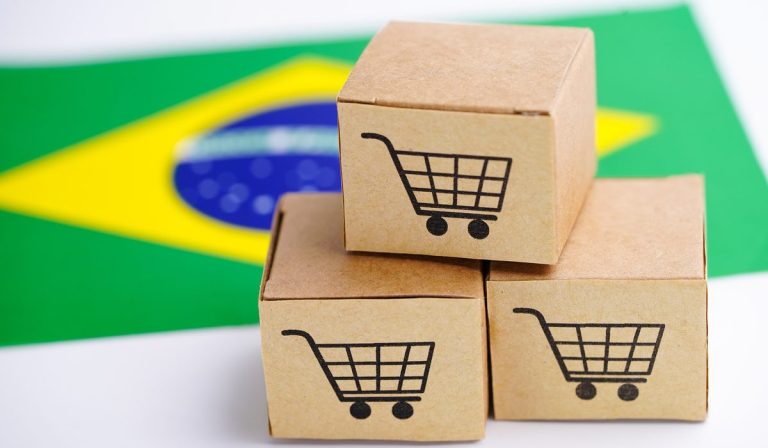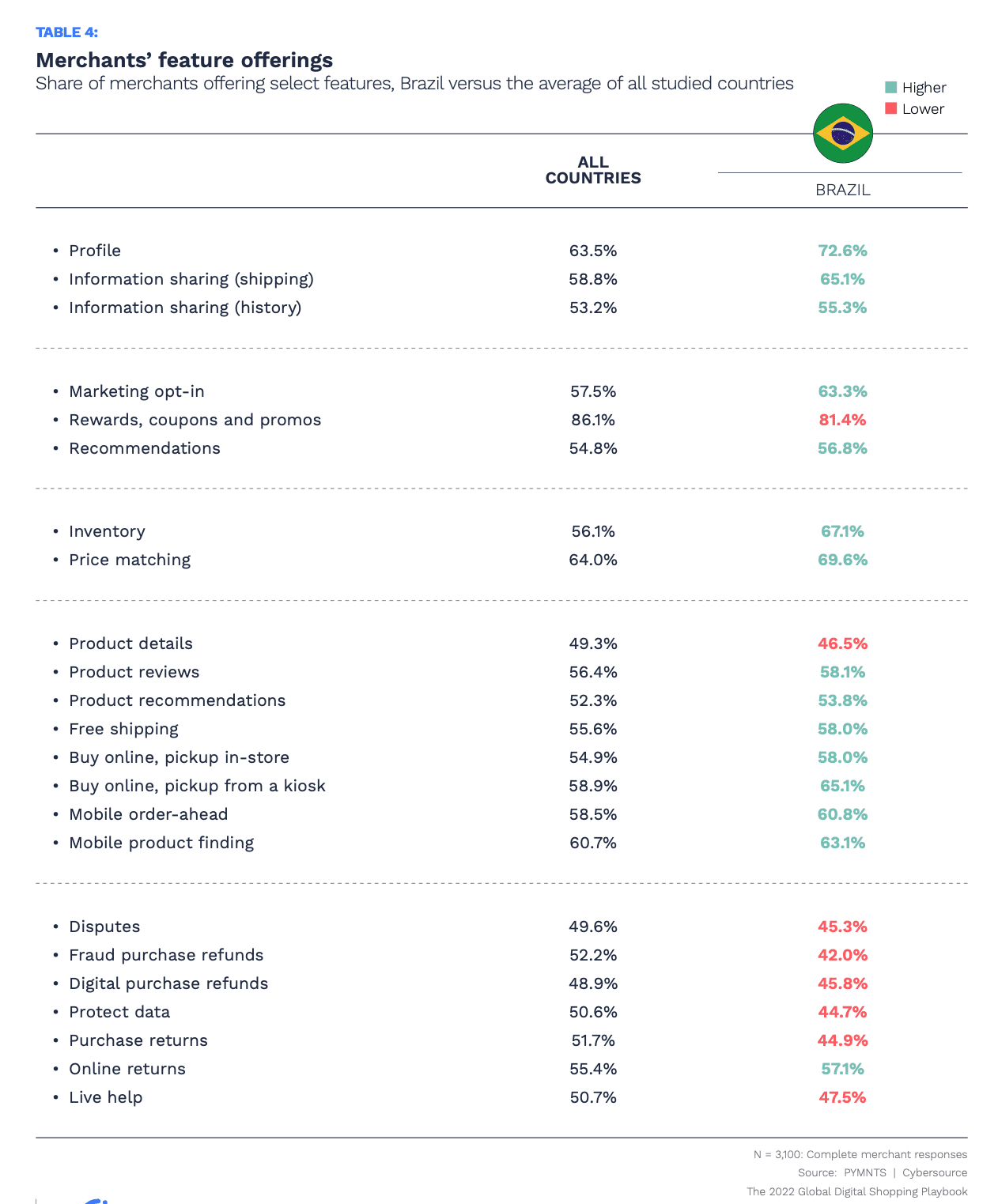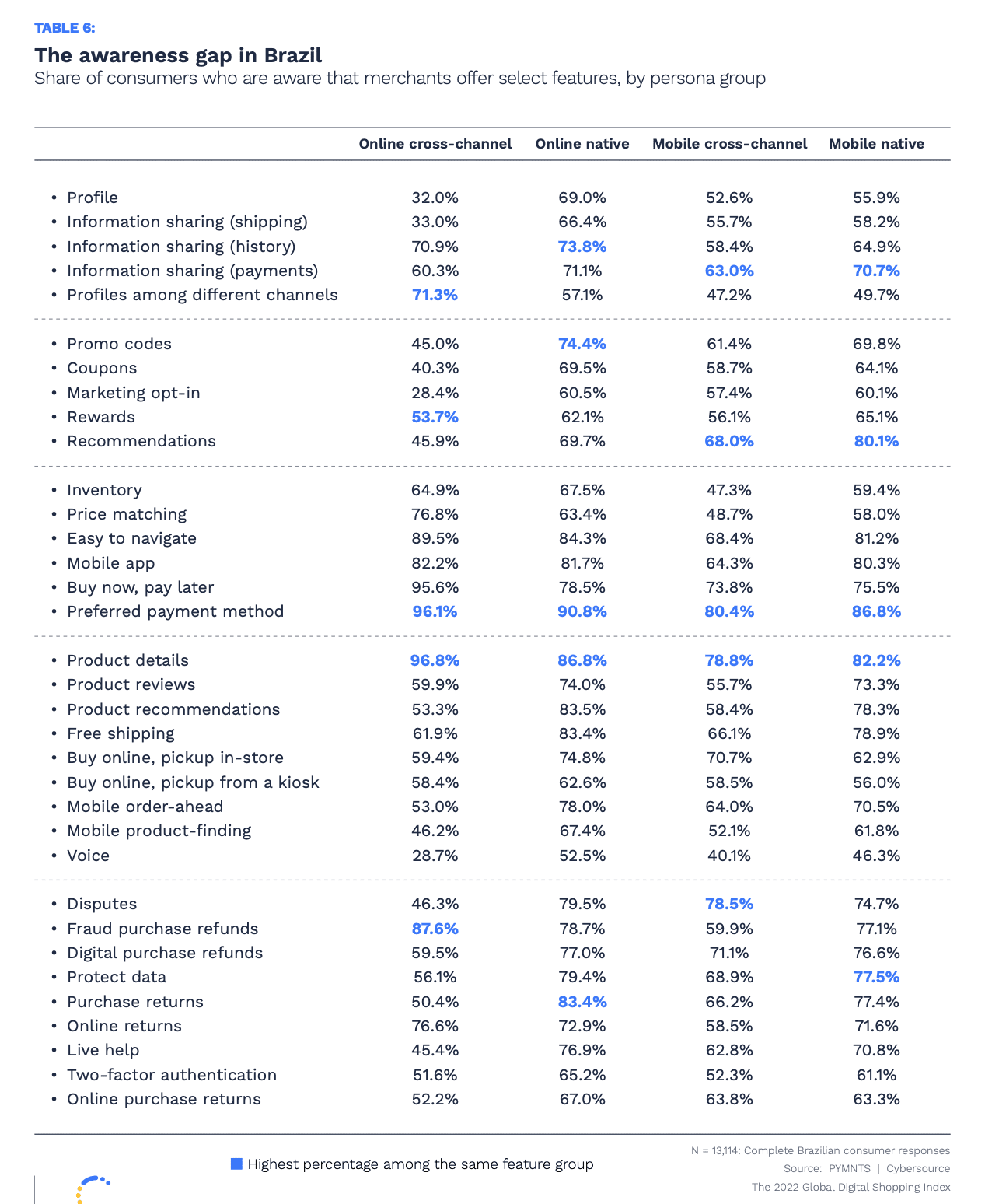Feature-Rich Brazilian Merchants Struggle to Raise Consumers’ Awareness

Merchants in Brazil are some of the most innovative in the world, offering a wider range of choice in how their shoppers can shop, pay for and acquire their purchases.
In fact, they are above average across six countries PYMNTS studied in offering 15 of 23 digital shopping features we tracked, according to “The 2022 Global Digital Shopping Playbook: Brazil Edition,” a PYMNTS and Cybersource collaboration based on a survey of 2,201 Brazilian consumers and 602 Brazilian businesses.
Get the report: The 2022 Global Digital Shopping Playbook: Brazil Edition

At the same time, Brazilian consumers often do not realize how many shopping and payment options their merchants offer, creating an “awareness gap” that is the main reason many local shoppers are not using these options.
The usage of these features varies depending on which shopping channels shoppers use.
For example, consumers who shop on their desktop computers and pick their items up in-store 26% less likely than those who shop on their laptops and have their purchases delivered to their homes to realize that local merchants offer free shipping. The desire to avoid paying a shipping fee could even be the reason that these shoppers opt to pick their orders up in-store.
In addition, online cross-channel shoppers are less likely than online-native shoppers to realize that their merchants provide apps they can use to place, track and manage their pickup orders.
We suspect that either cross-channel shoppers lack familiarity with these features or that many local merchants’ websites and apps are being designed for smartphone users, potentially making it harder for consumers to identify the features available on their computers.

For businesses and innovators looking to gain a foothold in the Brazilian market, it is not enough to adopt digital and integrated shopping features. They must also ensure that those features are integrated into their broader shopping experiences in a way that makes the features easy to locate, access and use.